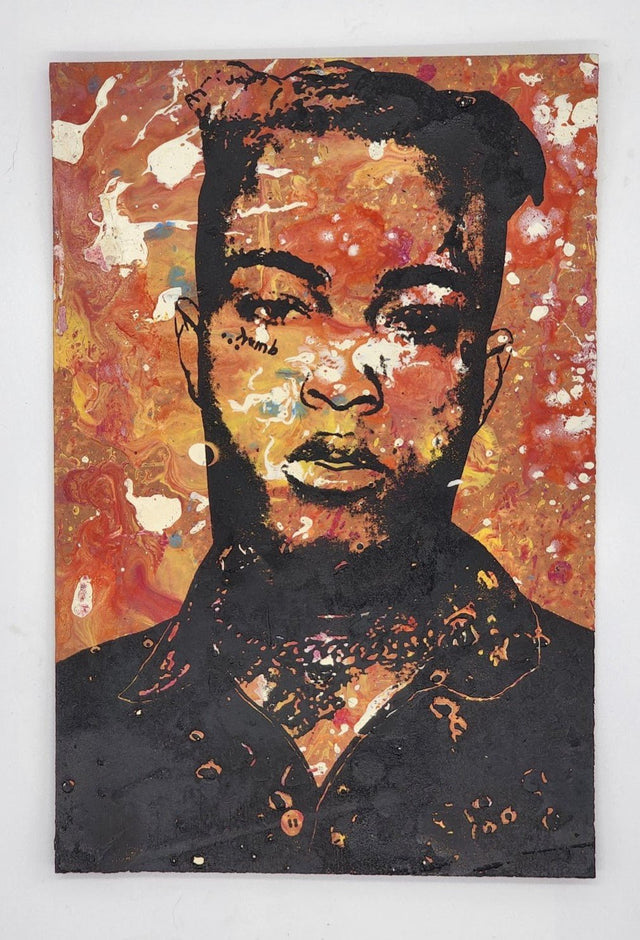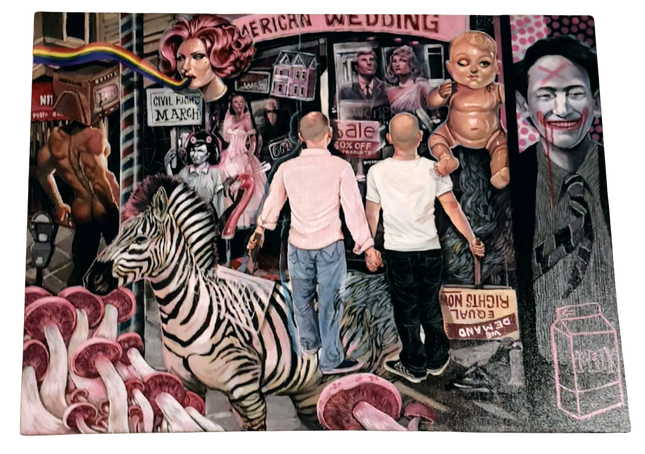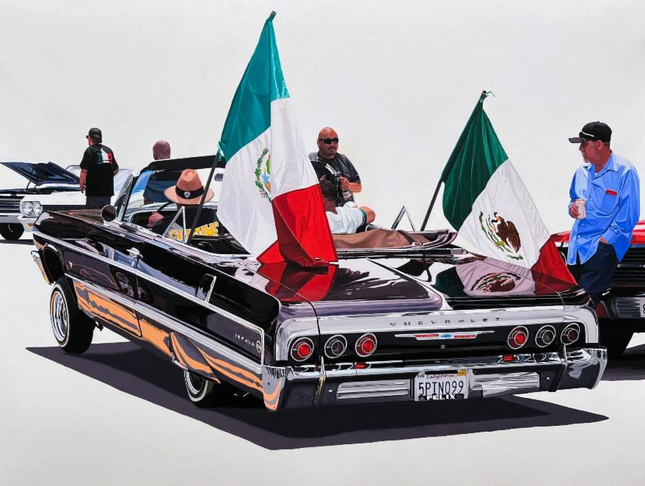
Man Male
-

Serge Gay Jr Pink Party Original Acrylic Painting by Serge Gay Jr
Pink Party Original One of a Kind Acrylic Painting Artwork on Stretched Canvas by Popular Art Pop Culture Artist Serge Gay Jr. 2011 Signed Original Acrylic Painting Size 40x30 Ready To Hang On Stretched Canvas Serge Gay Jr.'s "Pink Party": A Vibrant Fusion of Pop Culture and Fine Art "Pink Party," an original acrylic painting on stretched canvas by the acclaimed pop culture artist Serge Gay Jr., is a striking embodiment of the fusion between the worlds of high art and popular culture. This 2011 signed original artwork, measuring 40x30 inches, exemplifies Gay's ability to capture the zeitgeist of his era through a vibrant tableau that is at once playful, provocative, and poignant. The painting, ready to hang and enjoy, offers a window into the artist's vision where the lines between street art, pop art, and graffiti blur, creating a narrative that resonates on both an aesthetic and conceptual level. The artwork's visual lexicon is rich with symbolism and iconography, characteristic of Gay's style, which often weaves together elements of street pop art and graffiti artwork. "Pink Party" is no exception, with its bold colors, dynamic composition, and juxtaposition of imagery that speaks to the societal narratives and pop culture references. The painting's scene is a carnival of motifs that engage with themes of identity, celebration, and the undercurrents of social commentary, inviting viewers into a dialogue with the piece that goes beyond its surface beauty. Exploring the Layers in Serge Gay Jr.'s Artistic Expression The layers of meaning in Serge Gay Jr.'s "Pink Party" are a testament to the depth of his artistic expression. Each element within the canvas works in concert with the others to create a cohesive narrative that is both deeply personal and universally relevant. Gay's work often touches on the intersectionality of identity, culture, and the vibrant energy of urban life, and this painting is a celebration of those themes, presented with the flair and finesse that only a master of his craft can achieve. Gay's approach to pop culture is nuanced and layered, often reflecting on the past while commenting on the present. The imagery in "Pink Party" draws from a broad palette of cultural references, from music and fashion to social movements and everyday life. His ability to distill these elements into a single, harmonious composition is a hallmark of his work, making each piece a complex conversation starter. The use of acrylic paint adds a tangible texture to the work, emphasizing the physicality of the street art influence in his practice. The Cultural Relevance of "Pink Party" in the Artistic Landscape "Pink Party" holds a place of cultural relevance in the contemporary artistic landscape. It is reflective of a time when the boundaries between different art forms are increasingly porous, and the influence of pop culture on traditional art practices is undeniable. Serge Gay Jr.'s work is situated at the heart of this cultural shift, using the canvas to explore and explode the conventions of what fine art can be. This original piece by Gay not only exemplifies his skill as a painter but also his insight as a cultural commentator. Through his art, Gay captures the spirit of the times, embodying the energy, challenges, and triumphs of modern society. "Pink Party," with its captivating visual narrative and layered meanings, continues to resonate with audiences, securing its place as a significant work in the canon of 21st-century pop art. In the broader context of Street Pop Art & Graffiti Artwork, "Pink Party" represents the evolving nature of these genres, showcasing how they can transition from the walls of the city to the walls of a gallery without losing their impact or authenticity. The painting is a celebration of the street art ethos — accessible, engaging, and unapologetically bold. Serge Gay Jr.'s ability to bridge the gap between these worlds with such fluency is a testament to his role as a leading figure in the contemporary art scene. As a unique art object, "Pink Party" is not only a visual feast but also a piece of history, capturing the essence of an era where art is increasingly becoming a vehicle for social change and personal expression. It stands as a beacon of the creative possibilities that arise when the street meets the studio, and the result is a work that is as thought-provoking as it is beautiful.
$781.00
-

The Perez Bros Viva La Raza Archival Print by The Perez Bros
Viva La Raza Archival Print by The Perez Bros Limited Edition on Hand Deckled 290gsm Moab Entrada Fine Art Paper Pop Graffiti Street Art Artist Modern Artwork. 2023 Signed & Numbered Print Limited Edition of 25 Artwork Size 40x30 Archival Pigment Fine Art by The Perez Bros
$705.00



